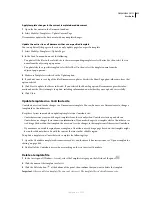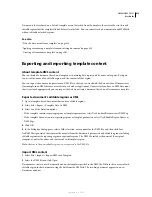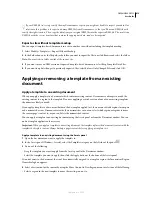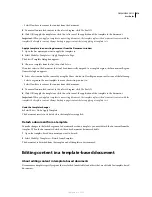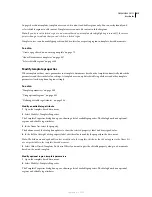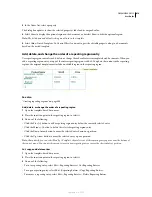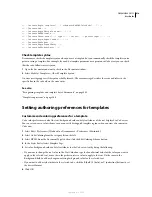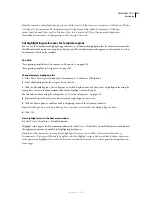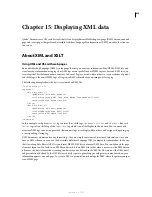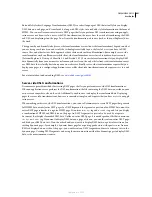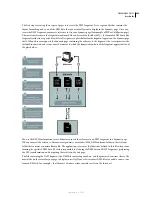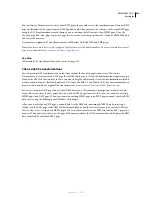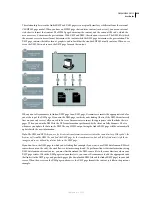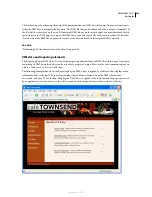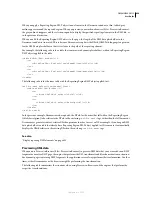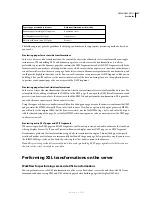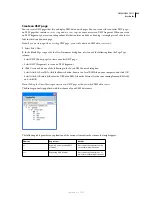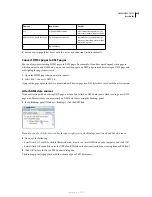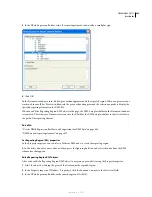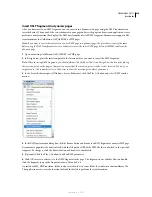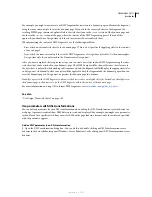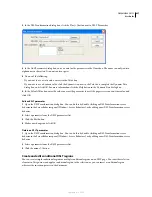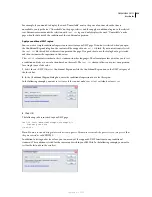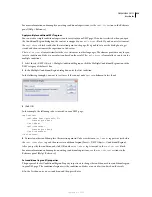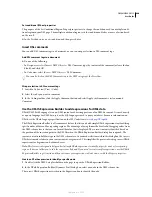
DREAMWEAVER CS3
User Guide
425
The disadvantage of performing client-side XSL transformations on XML data that comes from an external source
is that the XML data is only partially “dynamic.” The XML file that you download and alter is merely a “snapshot” of
the file that lives elsewhere on the web. If the original XML file out on the web changes, you must download the file
again, link it to the XSLT page, and repost the XML file to your web server. The browser only renders the data that
it receives from the XML file on your web server, not the data contained in the original XML source file.
See also
“Performing XSL transformations on the client” on page 444
XML data and repeating elements
The Repeating Region XSLT object lets you display repeating elements from an XML file within a page. Any region
containing an XML data placeholder can be turned into a repeated region. However, the most common regions are
a table, a table row, or a series of table rows.
The following example shows how the Repeating Region XSLT object is applied to a table row that displays menu
information for a restaurant. The initial row displays three different elements from the XML schema: item,
description, and price. When the Repeating Region XSLT object is applied to the table row, and the page is processed
by an application server or a browser, the table is repeated with unique data inserted in each new table row.
September 4, 2007

